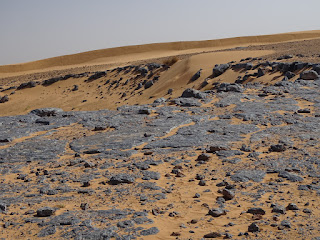“Why would you want to go to Morocco,” some friends asked us last April when we booked this trip. Our answer then was “It’s on our bucket list.” Our answer now is, “Why not?” There are few, if any downsides, and many towering upsides.
 |
The spectacular Bahai Palace
In Marrakesh |
Just having experienced a very full three weeks in several regions, we leave with fond memories of memorable experiences, sites, sounds, smells, flavors, and fun. Most of all, we enjoyed the people—the friendly Moroccans, our amazing guides, our safe bus and van drivers, and our fun traveling companions.
Ouarzazate
Since our last post about the Sahara Desert, we had two nights in Ouarzazate, a beautiful city built by the French as a garrison outpost in the vast Sahara region. Many famous movies have been filmed in the area such as Lawrence of Arabia, parts of Game of Thrones, the Man Who Would Be King, and some more recent action films like Indiana Jones, Star Wars, and more. We ate in a Greek restaurant opened in 1928, decorated with autographed photos of famous celebrities. Our hotel had numerous movie props (like chariots) throughout the grounds.
 |
| Game of. Thrones fans--recognize this gate? |
The next day we experienced a day in the life of Moroccan villagers, visiting with them in their homes and in the fields. It’s a hard life, but they seem to be getting by. Afterward we visited a newly formed women’s co-op called Imik Simik (bit by bit), empowering women with their own incomes and education. They taught us how to make couscous from scratch and fed us lunch. Later the women in our group had their hands decorated with henna.
 |
| Showing off their artwork |
 |
| Two bright women and one bored child! |
The Atlas Mountains
We’ve mentioned them before, some over 13,000 feet. They feed the aquifers and help irrigate he valleys and quench the thirst of the cities. We crossed them via a 7,000 foot pass in a very tortuous but scenic road into the bustling metropolis and historic city of Marrakesh. All we can say about the ride is “Wow!”
 |
| Near the top of the pass over the Atlas Mountains (note the road below) |
Marrakesh
This was a nice place to end. By then we were used to the heat, noise, hustle, and bustle of Moroccan inner cities (medinas). It's quite the energetic city, with lots of narrow alley bazaars, botanic gardens, palaces, mosques, and affluent neighborhoods. It even has City Bikes for rent for those who are suicidal. It comes even more alive at night. Anything goes from burkas to short-shorts to sleeveless tops. We stayed in a fabulous 400-year old mansion (riad) that was converted into a hotel. With three-foot thick walls and everything directed to the inner open-air courtyard, it was a peaceful refuge. The inside of the 800-year old Bahia Palace was a site to behold, as were the bustling crowded markets.

 |
| A bedroom in the Bahai Palace |
An Unexpected Highlight
Camping in the Sahara was the highlight of the trip, until our four-hour bus ride from Marrakesh to Casablanca. Our guide, Nory, practically had us in tears as he described his desperate attempt to immigrate to Italy via Tunisia in 2002. His Moroccan family in the Atlas Mountains had fallen upon hard times and he wanted to support them. He and his friends were robbed in Tunis. The boat, designed for 50, was crammed with 200. Awash in vomit near the engine, he thought it was the end when it took on water. The Tunisian navy rescued, robbed them of everything, and imprisoned in filthy sweltering cells for eight days, barely feeding them. They were finally released at gunpoint on the Lybian border and trekked for several days to get to civilization, where a fellow Moroccan helped them out.
 |
| Nory Al Mazdi, our guide |
He said it’s no wonder the Arab Spring started in Tunisia, as the government then was very repressive, unlike in Morocco then and especially now. We’re glad he survived because he enriched our lives beyond measure, and those of everyone he encounters. There are hundreds of thousands of desperate and talented people just like Nory who risk everything for a better life.
Glad We Went!
Glad we went, but looking forward to getting home. As we said before, it’s modern, relatively clean, friendly, scenic, and historic. We don’t think we’ve been anywhere that had such distinctive and consistent architecture throughout. We felt very safe, even walking the narrow streets at night.
Our only regret is that we didn’t bone up on our bad French before we left, but that wouldn't have helped us in the hinterlands. We feel comfortable traveling independently in many parts of the world, but due to the language, culture, and logistics, Morocco is perhaps best experienced through a guide that can get you into the back door (and the nomad tents) of distant regions.
 |
| In a small part of the huge Marrakesh markets |
 |
| Our farewell dinner in a former riad |



















































